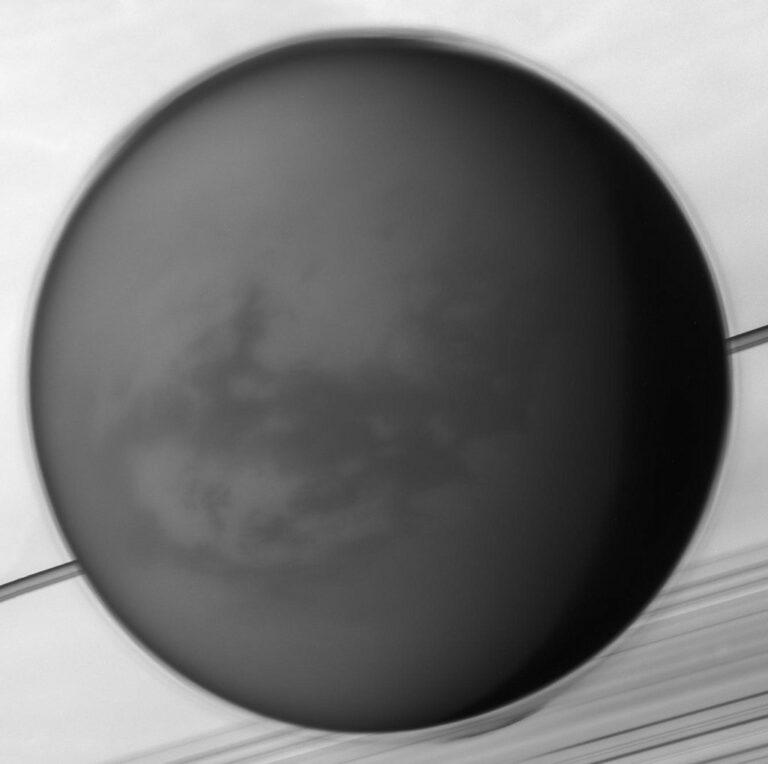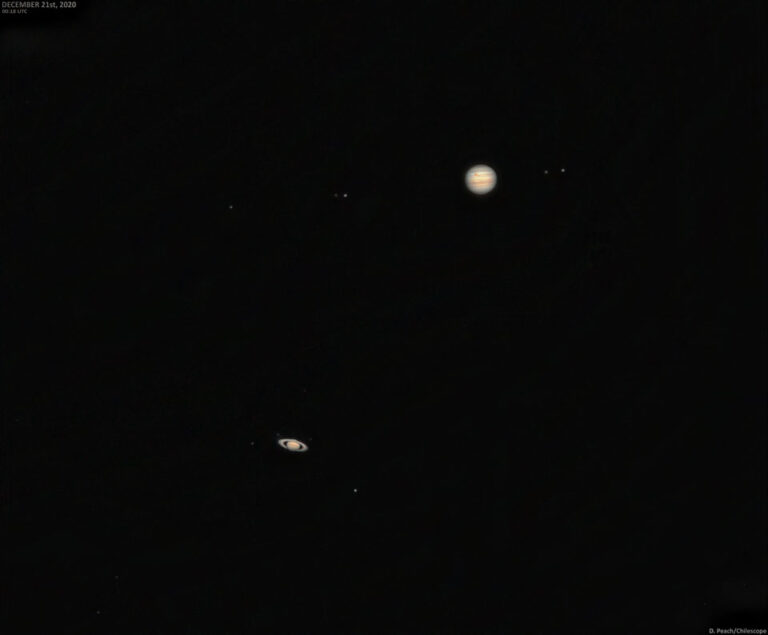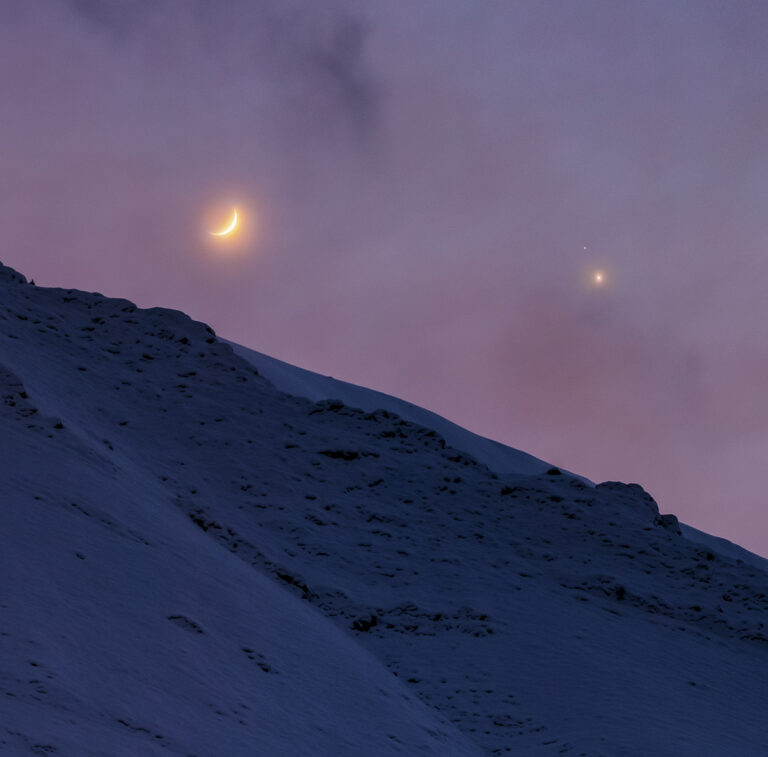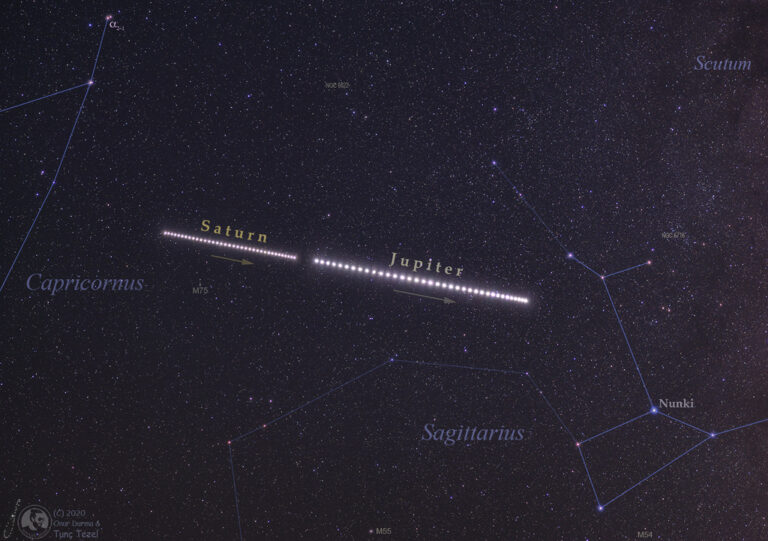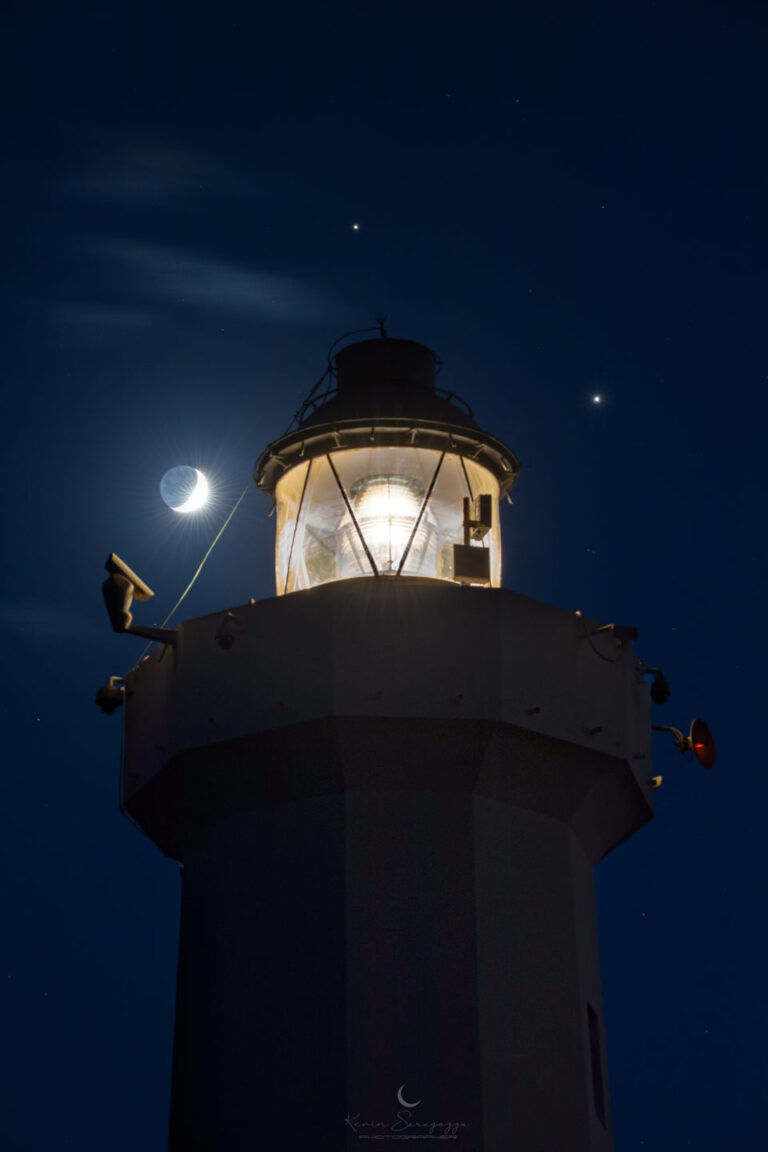月华、木星与土星
2021年01月19日 A Lunar Corona with Jupiter and Saturn Image Credit & Copyright: Alessandra Masi Explanation: Why does a cloudy moon sometimes appear colorful? The effect, called a lunar corona, is created by the quantum mechanical diffraction of light around individual, similarly-sized water droplets in an intervening but mostly-transparent cloud. Since light of different colors has different wavelengths, each color diffracts differently. Lunar Coronae are one of the few quantum mechanical color effects that can be easily seen with the unaided eye. Solar coronae are also sometimes evident. The featured composite image was captured a few days before the close Great Conjunction between Saturn and Jupiter last month. In the foreground, the Italian village of Pieve di Cadore is visible in front of the Sfornioi Mountains….


